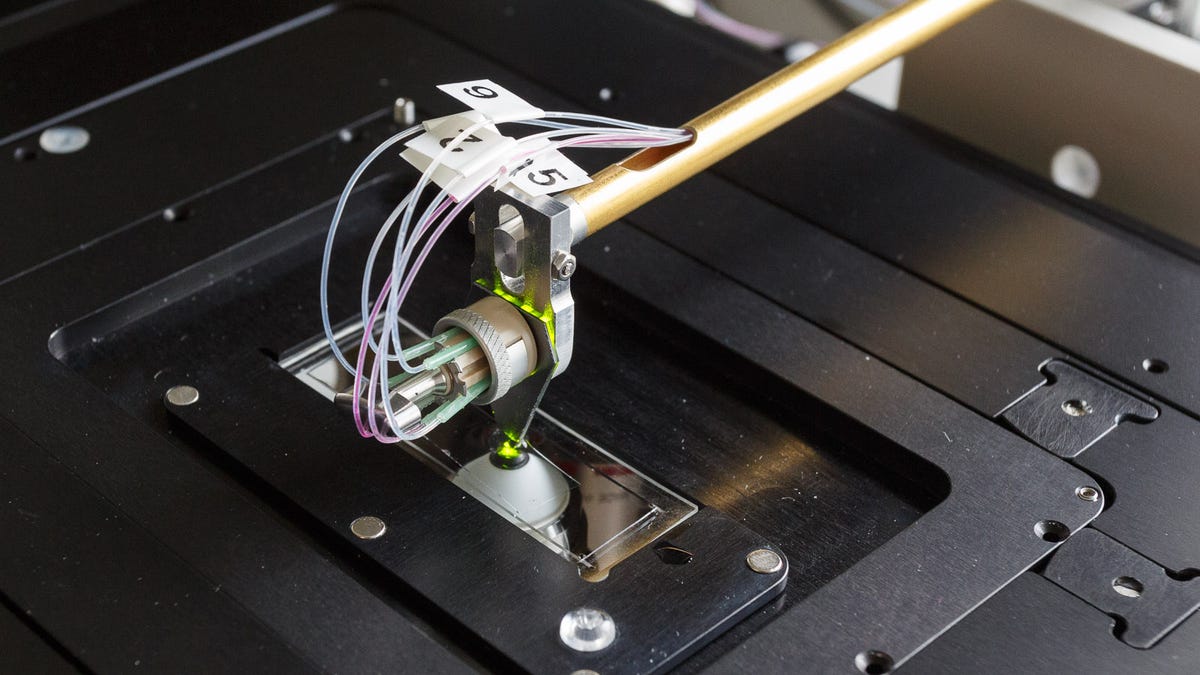IBM microfluidics tech designed to improve cancer diagnosis
A technique to pump tiny amounts of marker fluids onto a test sample could enable many more tests during a biopsy and therefore a better understanding of a person's cancer.

ZURICH -- Researchers accustomed to designing tiny features on microprocessors have taken up a new tiny-technology challenge: improving the diagnostic tests used to spot cancer.
Using a procedure called a biopsy, pathologists today closely examine cells to try to determine if a person has cancer and if so, details about what type. Such tests use chemical markers that can spotlight a variety of problems, including different types of cancer, but the tiny slice that constitutes a biopsy sample isn't big enough for a multitude of tests.
IBM's approach, which University Hospital Zurich plans to test in the coming months, uses a chip technology called microfluidics to shrink the area required for such tests to a square patch just 100 micrometers wide -- about the same as a human hair. It pumps the marker chemical down one tiny channel into the biopsy sample, then slurps it back up with a second channel to keep the marker from spreading beyond the confines of its designated patch, and a pathologist watches on a microscope to see the response.
"It's a very economical way of using critical tissue samples," said Emmanuel Delamarche, an IBM Research Zurich expert in nanotechnology matters such as self-assembling devices. A typical sample measuring 1 square centimeter has room for 500 test patches on just 5 percent of its surface, he said.
With the technique today, a pathologist can steer the tip around with a joystick so it puts down the marker in just the right area; the channels in the tip itself are just a few millonths of a meter wide. With several reservoirs of markers attached, the pathologist can switch among several markers.
In the initial incarnation, a pathologist watches the results on a display. But Delamarche hopes eventually the system could work much more automatically: A sample is inserted into a box and test results emerge shortly afterward without human intervention.
"We need to partner to re-engineer our technology to make it into an instrument that is very reliable," Delamarche said.

